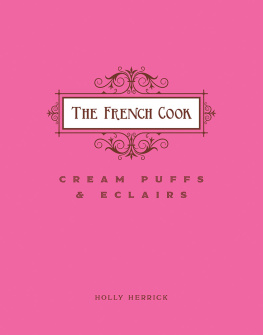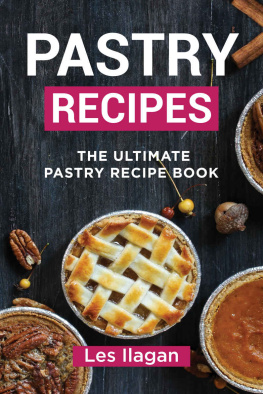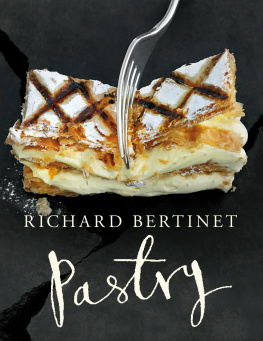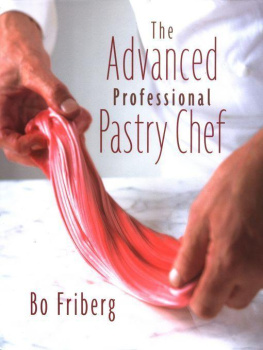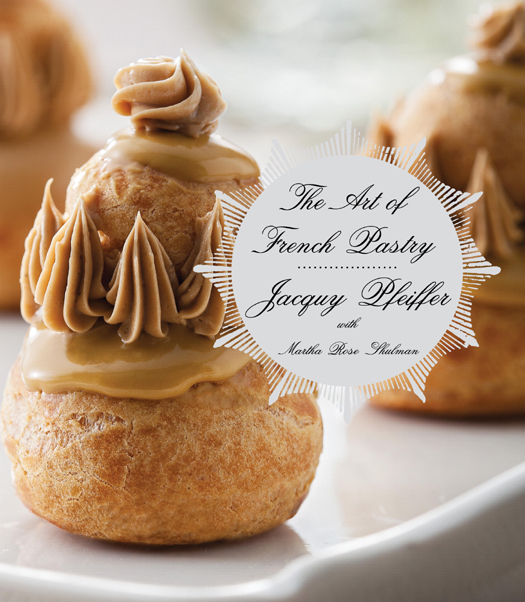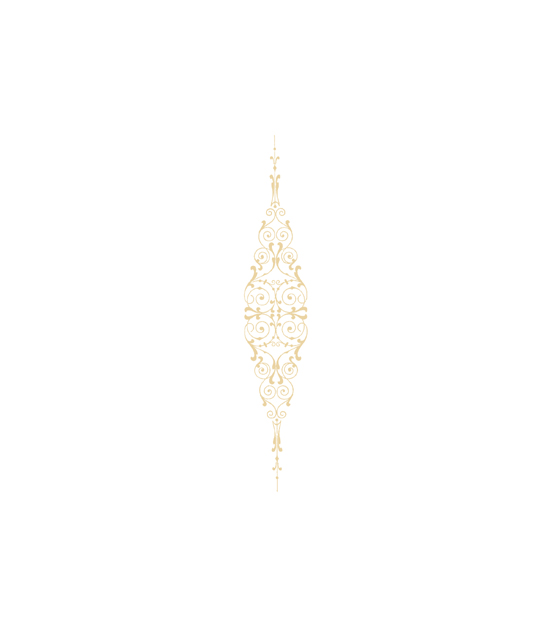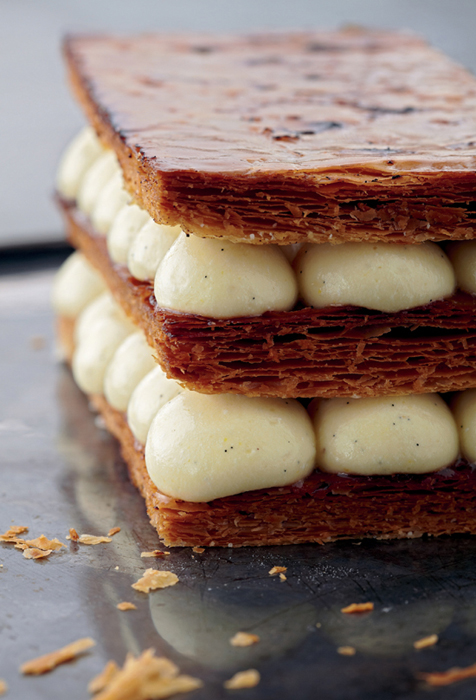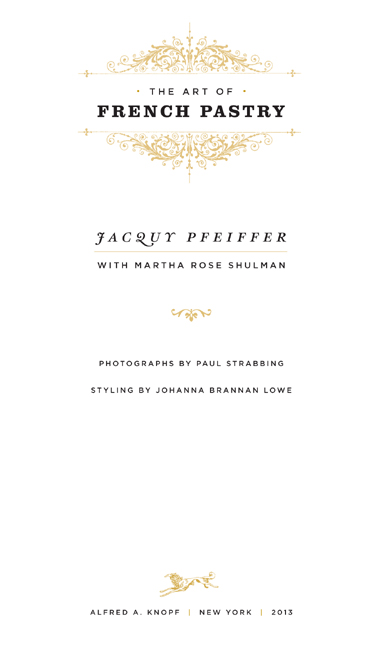THIS IS A BORZOI BOOK
PUBLISHED BY ALFRED A. KNOPF
Copyright 2013 by Jacquy Pfeiffer
Photographs copyright 2013 by Paul Strabbing
All rights reserved. Published in the United States by Alfred A. Knopf, a division of Random House, LLC, New York, a Penguin Random House Company, and in Canada by Random House of Canada Limited, Toronto.
www.aaknopf.com
Knopf, Borzoi Books, and the colophon are registered trademarks of Random House, Inc.
LIBRARY OF CONGRESS CATALOGING-IN-PUBLICATION DATA
Pfeiffer, Jacquy.
The art of French pastry / Jacquy Pfeiffer ; with Martha Rose Shulman ;
photographs by Paul Strabbing.
pages cm
A Borzoi book.
ISBN: 978-0-307-95935-5 (hardback)
Ebook ISBN: 978-0-307-95936-2
1. Pastry. 2. Cooking, French. I. Shulman, Martha Rose. II. Title.
TX773.P468 2013
641.865dc23
2013017643
Jacket photographs by Paul Strabbing
Jacket design by Carol Devine Carson
v3.1
To my little sister Nathalie
tu me manques tellement
CONTENTS
PREFACE
A LIFE IN PASTRY
I WAS RAISED IN MY FATHER S BAKERY in a small Alsatian village called Marlenheim. My bed was right above the oven (wonderful in winter, but not so great on hot summer nights, since air conditioning was not, and is still not, very common in French homes), and until I was fifteen, the magical aroma of fresh-baked bread was the only alarm clock I knew. My father got up every day at midnight to tend to his dough. His was the schedule of a traditional French baker in the 1960s and 70s, working from midnight to noon and sleeping after lunch from one to four and then again from about nine to midnight. My mother ran the front of the shop. Up at five a.m. every day, she would have the shop ready to open at sixby which time a line had formed outside the doorand would serve customers until we closed at seven p.m.
My mom knew her customers well. She knew the ones who liked their bread light brown and those who preferred it dark and bien cuit ; she knew who bought croissants, and how many. She knew to set aside a large kougelhof for this neighbor, six cinnamon rolls for that one. Alsatians are exceptionally particular when it comes to food, and a successful baker must serve them well; they may not complain openly, but if they are unsatisfied they will never, ever return to your shop. My five-foot-tall mom cheerfully churned through one order after another, her cash register a pad of paper on which she quickly tallied up the totals. I worked in the shop one Saturday morning when I was about fourteen years old on a day when my sister Elisabeth, who usually helped out on Saturdays, couldnt. Punk that I was, I thought it would be easy; what could be so difficult about grabbing a loaf of bread and giving it to a customer? My mom smiled, knowing how little I knew about her customers, who expected me to know exactly what they wanted. I could feel them looking over my shoulder to make sure I made no errors as I added up their orders (luckily, I was good at math). By the end of that morning I was so stressed that I begged my mother never to make me work there again. Ill scrub floors, clean every pot and pan in Dads kitchen, anything, but please dont make me work the front again! She smiled and said, Now youve had a slice of my daily life.
After school, on weekends, and during school vacations my two sisters, my brother, and I were often required to work in the bakery (but not in the front of the shop). Wed try to hide as much as we could, escaping to play in the nearby hills or in the courtyard and barn of our converted farm, but eventually my parents would find us. My father was very strict, and there was always something that needed to be donegreasy sheet pans and kougelhof molds to clean, apples to peel for chaussons , mirabelles , and quetsches to cut up for tarts. On Thursdays there were onions to peel for my mom, who sliced them thin and cooked them in butter for the savory, thin-crusted tartes loignon dAlsace that my dad made once a week. Sometimes I was required to brush his puff pastry vol au vents with egg wash, a task he was very particular about, as too much egg wash would prevent the puff pastry from rising.
During the holiday season there were hundreds upon hundreds of Christmas cookies to make and the entire family worked together, listening for hours on end to Edith Piaf, Charles Trenet, Maurice Chevalier, and other famous French stars of the 50s and 60s. Today I love that music, but back then I suffered through it. When school wasnt in session and if my fathers assistant didnt show up, my dad would wake me in the night to assist him in scaling 350-gram pieces of dough for baguettes and batards, whose weights are strictly enforced in France. The dough would stick to my inexperienced fingers as if it wanted to be a permanent part of me. At the time it was frustrating to deal with this sticky dough while watching my father shape all of the loaves quickly and efficiently.
But the bakery, which my parents had built with their own sweat and tears, with 250 francs (about $50) in their pocket, was not all drudgery for me. I loved to work with my hands from a very young age, and after school if I wasnt playing soccer or participating in some contest my brother and sisters and I had cooked up, or tending an injured animal Id rescued from the barn, Id ask my mom for any dough scraps left over from the mornings production. I was happy to spend hours making sculptures or culinary creations out of dough while my father slept. I would bake them in the brick oven, which would still be hot hours after it had been turned off for the day. I loved molding things so much that my mom saved the red wax wrappers from the Babybel cheese we ate because she knew I liked to fashion it into flowers and other shapes. Id do it at the table every night.
As I got older and watched my fathers business grow I began to understand that an artisan can have a good life. Hard work and discipline are required, but we Alsatians are a disciplined lot. My father often told me not to go into the food businessit was too hardwhile at the same time I knew that he secretly hoped I would someday take over his bakery. But I wanted to do something more artistic. Pastry was my calling, and so I asked my father to look for a pastry chef I could apprentice with.
My exposure to pastry work had begun at my fathers side. Although he was a boulanger , not a ptissier a baker, not a pastry chefhe made his share of clairs, mille-feuilles, cookies, and cakes. Alsace is a land of traditions. For hundreds of years bakers have been making the same items for each important date on the calendar. A birthday, first communion, graduation, or wedding in our village meant that my father would be very busy in his bakeshop. He could make an excellent sponge cake filled with delicious chocolate, coffee, or vanilla butter cream (butter cream was king when I was growing up in the 60s) and decorated with old-fashioned Victorian filigree piping. If there was a big wedding in the village hed get thirty, forty, or fifty orders at once because it was the tradition in Alsace that when somebody married off his daughter or son the parents would give filled and decorated cakes to all of the family and friends who came to the wedding as a thank-you. On such occasions, my siblings and I would spend many hours helping my dad, cutting the sponge cakes into three layers, sprinkling them with syrup spiked with kirschwasser, and filling them with butter cream. My dad would ice the cakes, stick toasted sliced almonds on the sides, and pipe the decorations on top. After I began my apprenticeship I often helped in the family bakery on weekends or after work during these busy periods, and by then I could also do the decorating. Piping countless cakes for my dad is how I perfected my skills: pipe a lot, and you will eventually know how to do it.


